Abatement: The reduction or elimination of a portion of rent during the lease term. Commonly referred to as “free rent,” “rent abatement” or a “rent concession.” An abatement may be offered outright, or alternatively, upon a specified event (e.g., when granted by a landlord in the event a tenant does not receive an essential building service after a pre-specified term of days).
Abatement Recapture or Concession Recapture: A provision contained in a lease which conditions tenant’s receipt of free or abated rent, a tenant improvement allowance, any cash or other bonus, inducement or consideration for tenant’s entering into the lease upon tenant’s full and faithful performance of all of the terms, covenants and conditions of the lease. Generally, upon the occurrence of an uncured default by a tenant, any such abatement or concession will (1) be deemed of no further force or effect and (2) the unamortized amount (calculated on a straight line basis over the initial lease term) of any rent or other consideration will be immediately due and payable by tenant to landlord.
Absorption: The amount of inventory of leasable space that became leased during a particular time period in a specific market, typically reported as the absorption rate.
Absorption Rate: Absorption rate is the rate at which available properties are leased in a particular market during a specified time period, usually expressed as a percentage of total square footage.
Accelerated Rent Provision: A lease clause requiring immediate payment (i.e., the “acceleration”) of all sums due for the balance of the lease term subsequent to an uncured tenant default or early lease termination event. Given that many landlords are of the mindset that (a) all rent is technically due for an entire calendar year or lease term as of the lease commencement date and (b) the payment of fixed or base rent in monthly installments is merely for a tenant’s convenience, to a landlord having rent acceleration in its lease is imperative. Conversely, to a tenant, it is equally imperative to insert language to the effect that “tenant shall only pay fixed or base rent as it becomes due on a monthly basis” when an acceleration event would otherwise occur.
ACM: See “Asbestos Containing Material(s)” below.
ACP-5: A certificate indicating the presence (or lack thereof) of asbestos containing material in compliance with applicable law. According to the NYC Department of Environmental Protection website, it is a “not an asbestos project” notification form. To a tenant, in an ideal world the landlord will make a representation with the lease that landlord shall “deliver the premises free and clear of any hazardous materials along with an ACP-5 certificate (or the equivalent in other jurisdictions) indicating that the premises are asbestos free.” For landlord advocates, consideration should be made to having your lease contain language specifying that if any asbestos containing material – which is currently in compliance with applicable law – is disturbed by the performance of tenant’s work, then the tenant will be responsible for the remediation associated with the removal of such asbestos. For more information, please click here.
ACP-7: According to the NYC Department of Environmental Protection website, it is an “Asbestos Inspection Report” Asbestos Project Notification. For more information, please click here.
Ad Valorem: Latin for “according to value,” it is a tax based upon the assessed value of real estate or personal property.
ADA Compliant: Meaning that a commercial property complies with Americans with Disabilities Act (ADA), which according to the United States Department of Labor website, is a federal law prohibiting discrimination against individuals with disabilities in employment, transportation, public accommodation, communications, and governmental activities.
Additional Rent: All sums due to a landlord pursuant to a lease other than base or fixed rent, which may include, among a plethora of items, real estate taxes, common area expenses, operating cost escalations, sub-metered charges and attorneys’ fees payable to a landlord.
Add-On Factor: Sometimes referred to as a “Loss Factor,” or “Rentable/Useable (R/U) Factor,” an add-on factor represents tenant’s proportionate share of non-usable square footage in the common areas of the building (such as lobbies, hallways, shafts, stairwells, elevators and restrooms) or occupied by structural components (such as support poles and interior walls). It is expressed as a percentage which is multiplied by the usable square footage to determine the rentable square footage upon which a tenant will pay rent. Note that add-on or loss factors can vary wildly by market and by landlord.
AIA Contracts | AIA Construction Contracts | AIA Architectural Contracts: Contract documents created by the American Institute of Architects (AIA) that serve as the models used in the design and construction industries.
Air Rights: Unused development rights for real property (a.k.a. a piece of land); air rights are often referred to as the empty space above a piece of real property. See Development Rights.
Alteration | Alterations: Work performed or to be performed to space in a building; alterations are generally considered to interior non-structural work (e.g., work performed on a “system” such that for plumbing, electrical or HVAC), cosmetic in nature (e.g., work such as painting or carpeting), or structural in nature (e.g., erecting or demolishing load bearing walls).
Americans With Disabilities Act: According to the United States Department of Labor website, is a federal law prohibiting discrimination against individuals with disabilities in employment, transportation, public accommodation, communications, and governmental activities.
Amortization | Amortization Schedule: Amortization is the process of spreading out the deduction – often on a straight line basis – of capital expenses, loans, free rent concessions or even tenant improvement allowances granted by a landlord to a tenant over a period of time. Amortization can also be described as a reduction of a debt by regularly scheduled payments of interest and principal over a designated period of time. An amortization table or schedule illustrates such payments (or deductions) and the remaining balance due after each payment is made.
Amperage (Amp or Amps): The simplest definition is that found in the Cambridge Dictionary (i.e., the strength of electrical current needed to make a piece of electrical equipment work). Tenants will often (or should) ask a landlord to represent that the building’s feeders, risers and wiring currently existing in the building are available, suitable and safe for tenant’s intended purpose and that electric current of up to a specified amount of watts (e.g., six (6) watts) per usable square foot amperage (demand load) of electricity (exclusive of HVAC) will be available to the space it is leasing.
Anchor Tenant: The major or principal tenant serving as the primary draw to a shopping center or building.
Annual Percentage Rate: The yearly cost of credit, including the interest and fees, expressed as an interest rate.
Antenna Rights: A (non-exclusive) right of a tenant, at its sole cost and expense, to install, service, maintain, and replace during the term of its lease an antenna (often limited to 18 to 24 inches in diameter) for their use and not for use by any other party. Subject to a plethora of restrictions, the antenna is generally located on a setback or on the roof of a building, in a location to be determined by the landlord in its sole discretion.
Architectural Fees | Architect Fees: The cost of the services of an architect to a landlord or tenant, usually expressed as either a percentage of the total contract amount or based on the square footage of the space. The fee will vary according to the services provided and the complexity of the project. For work or other alterations to be performed by a tenant, most leases provide that the cost for the review of an architect’s construction documents by a landlord’s own architect and/or engineer shall be paid for by the tenant.
Asbestos Containing Material(s) (a.k.a. “ACM” or “Asbestos”): A strong and fireproof silicate-mineral fiber that becomes brittle (“friable”) with age, and pollutes air and water as extremely fine particles that as a consequence of prolonged exposure to it, can cause serious illnesses (e.g., asbestosis and cancer (such as mesothelioma)). Asbestos can be found in a myriad of items, including but not limited to, certain types of acoustic ceiling tiles, insulation, patching compounds, roofing shingles, texture paints, and vinyl flooring.
ASHRAE Comfort Chart: A standard often requested by tenants in a lease requiring that HVAC shall be provided to a tenant’s space at minimum specified standards to maintain year round comfort. The American Society of Heating, Refrigerating, and Air-Conditioning Engineers (ASHRAE) is a global society advancing human well-being through sustainable technology for the built environment focusing on building systems, energy efficiency, indoor air quality, refrigeration and sustainability.
“As Is” or “As-Is” Condition: The existing condition of the premises with all faults and defects and without repair by landlord. To a landlord, ideally, its incoming tenant will (a) represent that the premises and all systems affecting the same have been inspected by tenant and its engineers (or that that the tenant has waived such inspection or will conduct said inspections by the lease commencement date) and (b) accept the premises in its “as is” broom clean condition on the lease commencement date without representation or warranty, express or implied, in fact or by law, by landlord and without recourse to landlord as to the nature, condition or usability of the premises.
Assessment: Assessment in real estate is the setting of a value on property, usually for the purpose of calculating real property taxes. A special assessment is a charge levied against a property to meet the cost of certain public projects such as for water or sewers lines, streets, sidewalks or business improvement districts.
Assignment and Subletting: A provision in the lease detailing the rights of, and procedures for, allowing (or not allowing) a tenant to assign its lease (whereby tenant’s entire interest in the lease and the premises to which it relates is transferred to another party), or to sublet all or a portion of the premises to another party (whereby a tenant transfers less than its entire interest in the lease and the premises). Aside from the financial terms of the lease, from both a landlord’s (control) and tenant’s (flexibility) perspective, this clause is arguably the most important lease clause to negotiate.
Assignment | Assign: A transfer by a tenant of its entire interest in the lease and the premises to another party.
Attorn | Attornment: The agreement and acknowledgment to “become the tenant” of a new landlord for the building (e.g., in the case of the current landlord’s mortgage being foreclosed) or to the owner of the same property (e.g., in the case of a subtenant). For example, a well-crafted subletting clause should provide that “every subletting hereunder is subject to the express condition, and by accepting a sublease hereunder each subtenant shall be conclusively deemed to have agreed, that if this Lease should be terminated prior to the Expiration Date or if Owner should succeed to Tenant’s estate in the Demised Premises, then at Owner’s election such subtenant shall either surrender the Demised Premises to Owner within thirty (30) days of Owner’s request therefore, or shall attorn to and recognize Owner as such subtenant’s Owner under such sublease, and such subtenant shall promptly execute and deliver any instrument Owner may reasonably request to evidence such attornment.” See “SNDA” and “Subordination, Non-Disturbance and Attornment Agreement.”
Audit Rights: Often subject to a myriad of restrictions, audit rights are those rights granted to a tenant and landlord in a lease to object to and/or review calculations provided by the other party (e.g., the right of a tenant to review the real estate tax or operating expense escalation (or other escalation or pass-through) charge, along with the procedures and conditions associated therewith, and the right of a landlord to audit the books and records of a retail tenant required to pay “percentage rent” to such landlord).

